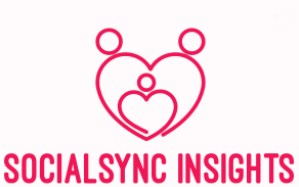2023 has marked a significant year for Adobe, as the company announced the integration of AI tools across its extensive software range. Adobe Illustrator shines prominently with the introduction of Generative Recolor in June 2023, a feature poised to revolutionize digital art.
Delve deeper into understanding what Generative Recolor is, its AI applications for digital designs, and how you can effectively use this tool within Adobe Illustrator.
What Is AI Generative Recolor?
Generative AI involves artificial intelligence tools trained on high-quality models to generate visual outcomes, typically based on a text prompt. Adobe ensures user artworks are not used for training their AI; instead, they utilize Adobe Stock images. So, what exactly is AI Generative Recolor?
AI Generative Recolor, introduced in Adobe Illustrator’s 2023 update, allows users to recolor vector artworks through descriptive text prompts. This simplifies generating various color schemes without intensive mental effort.
Generative Recolor can rebrand UX/UI icons, test multiple color variations for vector illustrations, and experiment with hue for artistic monochrome effects. These examples only scratch the surface of its potential applications.
How to Use Illustrator’s Generative Recolor Tool
Generative Recolor (Beta) has distinct functionalities in Adobe Illustrator, differentiated from tools like Adobe Firefly Vector Recolor. Firefly restricts users to SVG format vectors, while in Illustrator, this limitation is lifted, despite some ongoing constraints in AI art creation with Adobe.
Follow these steps to use Generative Recolor in Illustrator:
Step 1: Open or Create Your Vector in Illustrator
Create a vector directly in Illustrator or import a file in formats such as .ai, .svg, or .eps. These formats are compatible with Generative Recolor (Beta).
You can work on filled shapes and paths without needing outlines. The tool is compatible with vectors colored using the Live Paint tool. For .tiff files or other formats like Procreate drawings, utilize Illustrator’s Image Trace to convert them for recoloring. Ensure your vector colors are in RGB or CMYK format, not Grayscale.
Step 2: Open Generative Recolor
With your vector artwork on the Illustrator artboard, select the entire graphic or specific parts you wish to recolor. Navigate to Edit > Edit Colors > Generative Recolor (Beta).
This action opens the Generative Recolor window, segmented into sections for prompt input, sample images, result variations, and advanced recoloring options.
Step 3: Type a Prompt or Choose a Sample
Generate your color theme through two simple methods:
First, input your text prompt in the box. Describe any theme or style, then click Generate to apply it. Specific prompts yield better results. Example prompts include:
- Retro American Diner
- Living Coral
- Beautiful Pink Sunset
- Country Fields
- Barbie Girl
Alternatively, if you lack a theme description, select from nine sample prompts, each accompanied by images to visualize the scheme. Choose any to apply its theme to your vector.
Beneath the prompt box, use the + icon to specify particular colors, guiding the AI to consider these in tandem with your prompt. You can add multiple colors as needed.
Step 4: Apply Your Generative Recolor Result
Once generated, the tool offers four variations based on your prompt. Select one to immediately apply it to your vector—this overwrites the original.
Unsatisfied with the results? Click Generate again for a new set from the same prompt; AI rarely provides identical outcomes twice.
After applying the recolor, close the window to continue editing your vector. Use typical Fill and Stroke techniques or other options and adjust vector paths and shapes as usual.
Generative Recolor Is a Game Changer
It’s an exhilarating time to use Adobe. With Adobe Illustrator, you can start experimenting with Generative Recolor right away. Though it’s a beta tool, it seamlessly integrates into the software, offering ample room for future enhancements.
